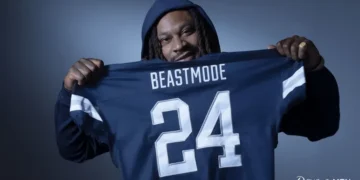Opinions expressed by Entrepreneur contributors are their own.
So, you’ve done it. Your lifelong dream of being a business owner is now a reality. You’re running a successful company. But have you considered what happens when you’re ready to retire? Or even worse, what happens if there is a premature death or disability of an owner? While it may seem like a far-off reality, legacy planning for the business you’ve worked hard to build is an essential ingredient in running a successful business for the long haul. And that’s where a buy-sell agreement comes in.
A buy-sell agreement is, in its barest definition, a contract between business owners to provide for ownership succession. It is a foundational tool that helps ensure the business can keep thriving as the organization and its owners grow and change.
Below are some of the key questions to consider when creating your buy-sell agreement.
Related: What Is a Buy-Sell Agreement and Why Is It Vital for a Successful Partnership?
1. How will you fund owner exits?
Often, we see that the exiting of an owner can cause the organization to produce a large amount of capital for the owner’s buyout, which has the potential to create financial stress on the company. This can often be mitigated through stipulations in the buy-sell agreement.
There are several ways to fund owner exits, including lump-sum payments, installment payments and gradual stock transfers. Transfer of this risk to an insurance company can also mitigate the capital needed from the business or other owners. Working with a wealth advisor and an attorney can be useful to figure out a good financing option for your organization.
2. How should you structure any insurance policies held to fund a buy-sell agreement?
While this may seem unlikely, protecting your business in the event of an owner’s death or disability is important. The two most common forms of funded buy-sell agreements are cross-purchase and entity purchase arrangements.
Usually implemented in businesses with fewer owners, in a cross-purchase arrangement, each owner purchases an insurance policy on the other. This allows the surviving owner to fund a buyout using the insurance proceeds and increases the tax basis of the survivor. This can also help reduce any subsequent taxes due on a future sale of the business. In an entity purchase arrangement, the business owns the insurance policies on all owners and uses the proceeds to repurchase the shares, which are then retired.
Related: Estate Planning for an Owner-Dependent Business
3. How do you replace owners that have exited?
Typically, when owners start exiting, the business is still going. Therefore, it’s important that the buy-sell agreement lays out the terms of owner transition.
For example, who is replacing this owner? What guardrails are in place for the person replacing this exiting owner? How will knowledge transfer work? All of these items should be outlined in your buy-sell agreement to help ensure the business is not negatively impacted by an owner’s exit.
4. How do you prepare for the unthinkable?
Despite the efforts many business owners put into planning for the inevitable, you can’t predict the future. The unprecedented Covid-19 pandemic resulted in significant business slowdowns and caused many business owners to revisit their buy-sell agreements. Some took advantage of the temporarily decreased value of their businesses and moved them into trusts at a significantly lower valuation. Others temporarily adjusted valuation calculations and owner stipulations to keep the business safe while it “weathered the storm.”
Let’s say an employee wanted to buy into their business during the pandemic. Based on the existing valuation formula, the transaction would have occurred at a significantly undervalued price for the owner. A review of the business owner’s buy-sell provision in the operating agreement resulted in adding a section to allow for the normalization of earnings in times of temporary stress. We are seeing more and more agreements include these types of “failsafe” clauses to protect a business during unforeseen, usually temporary events.
5. How will you valuate your business?
Your buy-sell agreement should outline how you value the business. There are a few ways one can value their business for legacy ownership or sale. Earnings Before Interest, Taxes, Depreciation and Amortization (EBIDTA) multiples are one way but are not the only way.
From book value to enterprise value, it’s vital to use the right formula for your industry and organization. It is also fairly common to include a failsafe provision that allows an independent valuation expert to appraise the business. And even more importantly, as the company grows, it’s essential to reassess your valuation formula. Of course, it’s not wise to constantly change your valuation formula. However, if your company grows from 20 employees to 200, it may be time to revisit your valuation method.
Related: Exit Planning for Modern Leaders: How to Determine Your Company’s Worth
6. How will you create a business prepared for your exit?
Once you’re ready to retire and fully enjoy the fruits of your labor, it’s important that the transition set you — and the organization you’ve worked hard to build up for success. Will you remain on the board? Will you be passing the organization to family or key employees? Will you be selling the business? These are key questions to consider as you build the legacy terms in your buy-sell agreement.
Whether you’re a business owner who hopes to sell soon or one who wants to build the company for many more years, an effective succession begins before the exit happens. Developing a high-quality buy-sell agreement is an important part of legacy planning. Answering these questions can help protect the integrity of the business you’ve worked hard to establish.
Read the full article here













